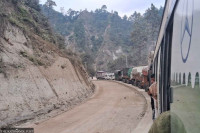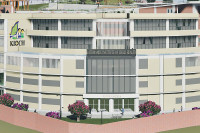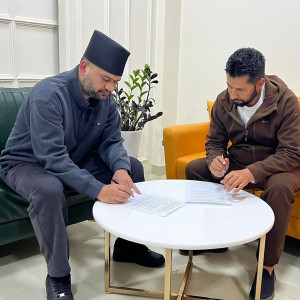Editorial
Virus in the villages
The perennially marginalised cannot be left to fend for themselves.
We have been hearing stories mostly from the cities—of private hospitals charging exorbitant fees, and of big government hospitals running out of oxygen, remdesivir and other medical supplies and failing to provide optimum care. But what has been missing in the past several months, and especially in the wake of the second wave of the pandemic, is the story of the hardships faced by people living in rural areas. As the problems facing rural people continue to remain eclipsed in the media, it might probably be safe to reason that the coronavirus count is much higher than what is reported, and that we have failed to take into account the concerns of rural people altogether.
Disparate anecdotes from people working in the media as well as various other walks of life speak of rural people experiencing symptoms of Covid-19, but failing to get either tested or treated for want of testing centres and medical facilities in their localities. This is true of the mountains as well as the Tarai plains, where a severe lack of infrastructure means that people are left with no option but to stay at home even when their symptoms clearly point to coronavirus infection. As the Post reported on Thursday, authorities have finally begun mass testing for Covid-19 in Jagarnathpur Rural Municipality in Parsa after 11 people died and scores of villagers were taken ill in a span of 10 days.
The health unit of the rural municipality had requested authorities to immediately dispatch a team of health professionals after as many as 173 people complained of fever at Chiljhapati settlement. More than a year after the country began its campaign against the pandemic, the people in the settlement were found to be unaware about the need to get themselves tested for coronavirus. What is more alarming is that even those patients who were aware that their symptoms were possibly related to Covid-19 refrained from testing and seeking medical help for fear of being taken to isolation centres.
Sadly, the Jagarnathpur case is no exception. The lack of awareness as well as medical infrastructure in rural areas means that a large number of coronavirus infection and death cases do not make it to the government’s official count. Not only have the people failed to get their rightful access to medical care, but they have also failed to even break the statistical barrier in case of illness and death. Moreover, as the Post reported on Thursday, the fact that there is a stark difference in the number of deaths reported by the Health Ministry and the Nepal Army points to a serious issue of data discrepancy when it comes to recording Covid-19 deaths.
It is no secret that the coronavirus has infiltrated every district, even possibly every local unit, of the country. While cases of infection and death in urban areas have received considerable attention, the same cannot be said of rural areas, as they continue to remain in the periphery of national discourse as well as physical infrastructure. The government must take serious note of the disparate accounts of infections and deaths coming from the hinterlands, and make sure to expand testing and treatment facilities even in remote corners of the country. The perennially marginalised cannot be left to fend for themselves in this hour of crisis.




 6°C Kathmandu
6°C Kathmandu














